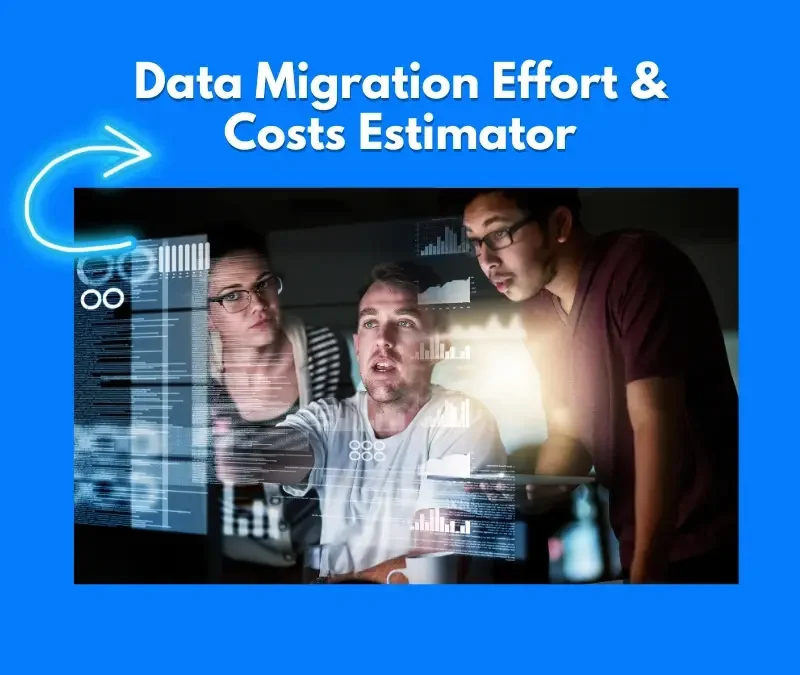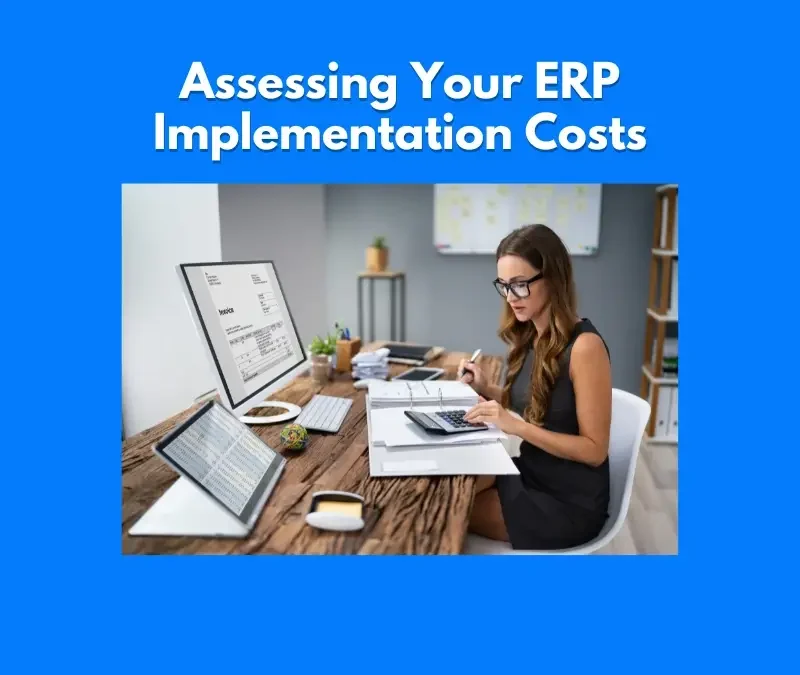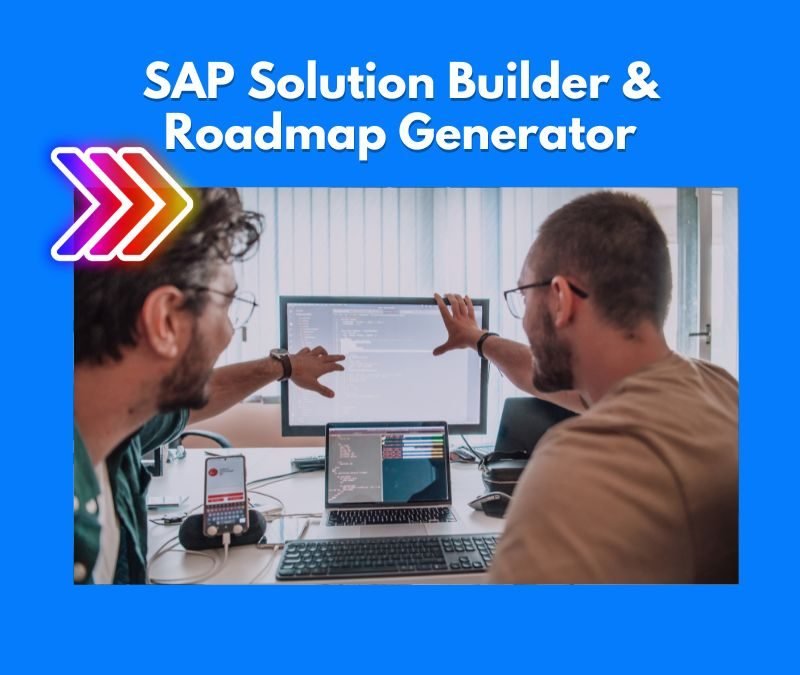SAP Articles
Why SAP Projects Go 50% Over Budget (With Real Data)
Noel DCosta
- Last Update :
Most SAP implementations go over budget. And not by 5 or 10 percent. In projects I’ve reviewed, overruns of 40% to 60% are common. I’ve seen mid-sized companies go from a $4 million plan to over $7 million by go-live. Enterprise projects? They can cross $20 million without blinking. That’s why my SAP Implementation Cost Breakdown is important!
SAP Cost analysis usually starts with underestimating services and that happens quite a lot! Then change requests pile up. Data migration takes longer than expected. Internal teams get stretched. And the original budget, whatever it was, stops meaning much.
I created this page for CFOs who are trying to approve real numbers, for IT and program leads expected to manage delivery, and for any executive being asked to commit seven or eight figures without clear breakdowns.
You’ll see:
Where the money actually goes (licensing is just 15–25%)
Why services often cost $1,000–$2,000 per consultant per day
What small companies pay per user (often $4,000–$6,500)
Where data migration and training costs get hidden
What regional factors push or pull total spend
My articles is not based on vendor brochures. It’s based on what projects actually cost once they’re underway. If you’re trying to scope, plan, or challenge a budget, this breakdown will give you something solid to work from, before the overruns begin.

Your software license model dramatically impacts total cost of ownership.
I've analyzed dozens of cases where cloud deployment saved 15-20% over 5 years despite higher monthly costs. Run a detailed 5-year TCO comparison before deciding.
10 Key Takeaways About SAP Implementation Cost Breakdowns
After seeing dozens of SAP projects from the inside, a few patterns just keep showing up. Costs surprise people the most. Often not because of one big thing, but because of how the smaller parts quietly add up. Here are ten points that might help set clearer expectations:
-
Licenses are just the start. Most of the cost lives in the implementation itself. Easily 1.5 to 2.5 times what you paid for the software.
-
Consultants take the largest cut. Configuration, integration, project coordination… all of it adds up. Often 30 to 40 percent of the total.
-
Size affects your per-user cost. Small businesses pay more per user than large ones. It feels unfair, but that’s usually how it plays out.
-
Customization adds layers. Every tweak adds time now and maintenance forever. Sometimes saying no is the cheaper option.
-
Where you implement matters. North America tends to be the most expensive. Other regions cost less, though they come with different risks.
-
S/4HANA is a heavier lift. More complexity, more specialized roles, and, in most cases, higher consulting rates.
-
Data migration runs deep. People almost always underestimate how messy their data is. Ten to fifteen percent of the budget feels low.
-
Training helps long after go-live. It might look like a soft area, but more training usually means fewer fires to put out later.
-
Phased rollouts can help cash flow. Not every company can handle one giant launch. Breaking it up helps.
-
Internal resources get stretched. You may not budget for it, but productivity takes a hit. It always does.
These are things I wish more teams had known earlier. Maybe one or two land for you too.
SAP Implementation Cost Breakdown by Category
Typical SAP Implementation Cost Distribution
| Cost Category | Description | Typical % of Total Budget |
|---|---|---|
| Software Licensing | Includes core modules, user licenses, and third-party tools. | 15–25% |
| Implementation Services | Covers consultants, partners, and configuration work. | 30–45% |
| Internal Project Team | Time allocation for internal IT, SMEs, and business leads. | 10–20% |
| Data Migration | Legacy data mapping, validation, and import. | 5–10% |
| Hardware and Infrastructure | Servers, cloud hosting, network setup. | 5–10% |
| Training and Change Management | Workshops, materials, and user onboarding. | 3–7% |
| Testing and Quality Assurance | Integration, UAT, and defect resolution. | 2–5% |
| Post-Go-Live Support | Hypercare, bug fixes, and enhancements. | 2–5% |
| Contingency / Risk Buffer | Reserve for unplanned issues or overruns. | 5–10% |
What You Need to Know About SAP Implementation Cost Categories
Here’s what you need to know about each category within your SAP Implementation Cost Breakdown:
- Software licensing fees – You’re choosing between paying a large one-time fee (perpetual) or smaller ongoing payments (subscription). Most companies are moving toward subscription models these days, but your finance team might have different ideas.
- Hardware requirements – Even cloud-based SAP implementations often require some upgrades on your end. Your old servers might not cut it anymore.
- Implementation services – This is where most of your budget goes. You need experts who understand both SAP and your industry.
- Data migration – Getting your existing data into SAP correctly is tedious, time-consuming work that nobody wants to do but everyone needs.
- System integration – SAP rarely exists in isolation – it needs to talk to your other systems, and making that happen isn’t cheap.
- Training and change management – Your people need to know how to use the system. Skimping here guarantees a painful go-live.
- Post-implementation support – The work doesn’t end when you go live. Budget for at least 6-12 months of enhanced support.
SAP Implementation Cost Breakdown by Business Size

I’ve seen clear patterns in what you’ll pay based on company size. Let’s get into the real numbers.
SAP Implementation Cost Ranges by Company Size and Industry
| Segment | Typical SAP Implementation Cost Range (USD) | Primary Cost Drivers |
|---|---|---|
| Small Business (under 200 employees) | $150,000 – $750,000 | Basic modules (FI/CO, SD), fewer users, limited integrations, standardized templates. |
| Mid-Sized Company (200–1000 employees) | $750,000 – $3M | Multiple modules, some custom development, training, and data migration effort. |
| Enterprise (1000+ employees) | $3M – $20M+ | Global rollout, complex processes, integration with legacy systems, multi-language/localization. |
| Manufacturing (Discrete/Process) | $2M – $15M+ | Shop floor integration, MRP configuration, plant-level custom logic. |
| Retail and Consumer Goods | $1.5M – $10M+ | POS integration, pricing/discount management, omni-channel processes. |
| Life Sciences / Pharma | $3M – $12M+ | Regulatory compliance (GxP), serialization, batch traceability, strict documentation. |
| Professional Services / Consulting | $750,000 – $3M | Project systems (PS), time & expense tracking, billing & contracts. |
| Utilities / Energy | $5M – $20M+ | Asset management, regulatory compliance, multi-company structures, field services. |
| Public Sector | $2M – $10M+ | Tender-based scoping, grant management, long approval cycles, audit trails. |
So, what do these numbers really mean?
- Small businesses typically go with SAP Business One. Most clients in this range spend around $300-400K total. Last year a manufacturing client of mine with 70-80 employees paid $332,000 all-in. That’s about $4,700 per user. That was not bad!
- Mid-sized companies need bigger solutions with more customization. A distribution company I worked with (380 employees) spent $2.9 million on their implementation. Their per-user cost hit $7,600.
- Enterprise rollouts get really expensive but actually cost less per user. The economies of scale kick in. A client with 3,500 employees spent $18.2 million, which works out to $5,200 per user.
Now you might ask – Why such big differences? More people mean more complexity. Lots of data to migrate. Too many integrations with other systems. More training needed.
And these numbers are just implementation within your SAP Implementation Cost Breakdown. Don’t forget the actual license costs that come on top of these figures.
Related Articles: Plan Smarter – Avoid the Budget Mistakes
Start SAP Projects the Right Way
Before the tools and tech, this is what really sets projects up to succeed.
Define SAP Scope Without the Guesswork
Use this structure to prevent scope creep before it wrecks your project plan.
Spot SAP Risks Before They Happen
Assess, track, and mitigate before issues become emergencies.
Get Your SAP Timeline Under Control
Too many SAP plans collapse from poor timing, fix that here.
SAP S/4HANA Implementation Cost Breakdown
S/4HANA costs are a whole different ballgame compared to older SAP systems. Let’s look at the differences in costs between Traditional ERP and SAP S/4HANA.
S/4HANA vs Traditional SAP ERP Cost Comparison (With Estimates)
| Cost Category | Traditional SAP ERP (ECC) | SAP S/4HANA (Cloud/On-Prem) |
|---|---|---|
| License Fees | $500K–$2M (one-time perpetual) | Cloud: $250K–$1.5M/year On-Prem: $600K–$2M (perpetual) |
| Infrastructure | $300K–$1M (servers, DB, storage) | Cloud: Included in subscription On-Prem: $200K–$800K |
| Implementation Services | $2M–$6M (avg. for mid-large enterprise) | \$1.5M–\$5M (faster via SAP Activate) |
| Customization | $500K–$2M (Z-programs, exits) | $200K–$800K (mostly extensions) |
| Analytics and Reporting | $150K–$500K (separate BW or third-party tools) | Included (embedded HANA + Fiori reports) |
| Upgrade & Maintenance (5 years) | $1M–$3M (periodic upgrades, patching) | Cloud: Included On-Prem: $300K–$1M (reduced due to simplified architecture) |
| Training & Change Management | $100K–$300K | $50K–$250K (Fiori UI reduces training effort) |
| 5-Year Total Cost of Ownership (TCO) | $5M–$15M+ | Cloud: $4M–$12M On-Prem: $5M–$13M |
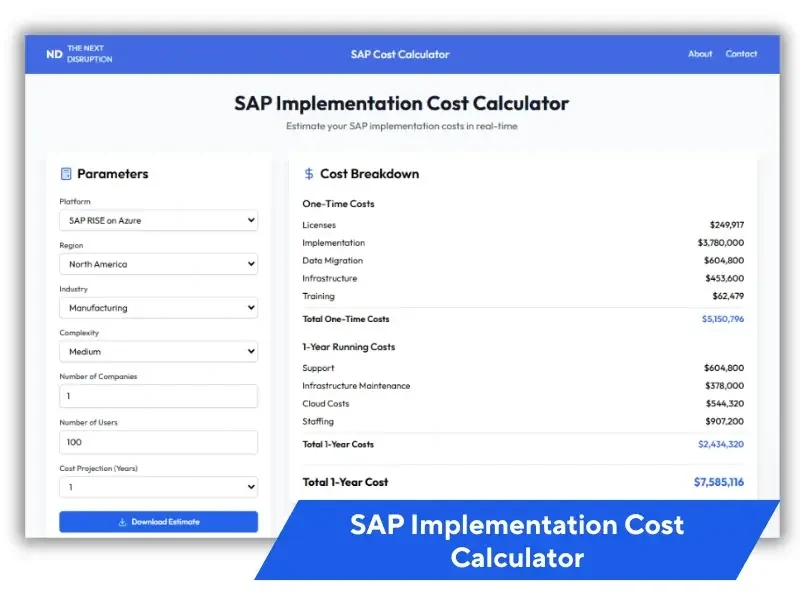
S/4HANA costs more than traditional SAP for good reason. The simplified data model means your system runs faster, but getting there isn’t cheap. Clients typically spend 20-30% more on S/4HANA implementation versus older SAP versions.
Cloud versus on-premise makes a huge difference too. On-premise S/4HANA requires serious hardware investment – we’re talking $100K minimum for smaller companies just for the hardware.
Cloud implementations skip this cost but lock you into ongoing subscription fees. Most companies I work with now choose cloud for the lower upfront cost, even though it might cost more over 5+ years.
Migration costs from legacy SAP can get expensive. If you’re on ECC 6.0, plan to spend 40-60% of your original implementation cost to migrate to S/4HANA. This includes data restructuring, custom code remediation, and new functionality implementation.
Timeline-wise, S/4HANA implementations typically run:
- Small companies: 4-6 months
- Mid-sized companies: 9-14 months
- Enterprise: 12-24+ months
Resource-wise, you’ll need dedicated internal teams plus specialized consultants. Don’t skimp here – experienced S/4HANA consultants cost more but save a fortune in the long run.
SAP Implementation Cost Breakdown by Region

Geography affects your SAP implementation budget significantly. Having led projects across three continents, I’ve seen dramatic regional differences that impact your SAP Implementation Cost Breakdown.
Regional SAP Implementation Cost Comparison
| Region | Typical Cost Range (USD) | Cost Influencers |
|---|---|---|
| North America (U.S. / Canada) | $4M – $15M+ | High labor rates, regulatory depth, and premium consulting demand. |
| Western Europe (Germany, UK, France) | $3.5M – $13M+ | Mature SAP market, cross-border rollout, tax localization. |
| Eastern Europe (Poland, Romania, Baltics) | $2M – $7M | Lower costs, nearshore options, fewer legacy systems. |
| Asia-Pacific (India, Singapore, Australia) | $1.5M – $9M | Offshore execution, multilingual delivery, GST implications. |
| Middle East | $2.5M – $8M | Infrastructure gaps, oil & gas vertical focus, localization. |
| Africa (South Africa, Nigeria, Kenya) | $1M – $6M | Limited resources, partner dependency, cost variability. |
| Latin America (Brazil, Mexico, Argentina) | $2M – $7M | Tax engine integration, currency shifts, hybrid approaches. |
| China | $3M – $10M | Local partner constraints, compliance burdens, SAP CN builds. |
| Global Rollouts (Multi-Region) | $10M – $40M+ | Cross-region scope, multi-language, finance harmonization. |
Regional SAP Cost Differences: Key Factors to Watch
North American implementations typically cost the most. For a mid-sized company, you’re looking at $1.5-4 million for a full implementation. Senior consultants often bill $1,800-2,500 per day for specialized skills. The total cost tends to be 15-20% higher than comparable European projects.
European pricing varies dramatically between West and East. Western European projects run about 5-10% less than North American equivalents, while Eastern European implementations can be 30-40% cheaper. A German client paid €1.3 million for an implementation that would’ve cost $1.8 million in the US.
India and Asia-Pacific offer the biggest savings. Indian implementations typically run 50-60% less than North American costs. I managed a project in Bangalore that cost $780,000 that would’ve easily topped $1.6 million in the US.
What drives these differences? Four main factors:
- Local labor costs and billing rates
- Infrastructure and hardware costs
- Licensing variations (SAP charges differently by region)
- Travel expenses for consultants
Remember that cheaper isn’t always better. Lower regional costs often come with trade-offs in experience levels, language barriers, and longer timelines.
A client who chose the lowest-cost option ended up spending 30% more fixing issues that wouldn’t have happened with more experienced consultants.
Calculating Your SAP Implementation Cost Breakdown
I’ve developed a straightforward approach to budget forecasting. Let me share my method for getting realistic numbers before you start.
Key SAP Implementation Cost Factors
| Cost Factor | Description | Cost Impact Range |
|---|---|---|
| Project Scope | Covers modules, processes, units, and global reach. | Can increase cost by 50–300%. |
| Customization Level | Extent of custom code and deviation from standard. | Adds 20–40% over baseline. |
| Data Migration | Includes cleansing, mapping, and validation work. | 5–15% of total cost. |
| Integration Complexity | Based on number and type of external systems. | 10–30% increase. |
| Implementation Model | Greenfield vs brownfield or hybrid setups. | Greenfield costs more up front. |
| Deployment Type | Cloud, on-premise, or hybrid infrastructure. | Cloud lowers infra costs 10–30%. |
| Consulting Partner | Global vs local firm, rate structures vary. | $75–$250+ per hour. |
| Training & Change Management | Covers user training and change programs. | Typically 3–7% of budget. |
| Project Timeline | Duration of phases and total cycle time. | Delays add 10–20% per quarter. |
Key Actions I Recommend to Avoid SAP Budget Overruns
Here’s my formula for estimating SAP implementation budget:
- Base software license cost + annual maintenance
- Multiply license cost by 1.5-2.5 (implementation multiplier based on complexity)
- Add hardware/infrastructure costs if on-premise
- Add 15-25% contingency buffer
For example, a manufacturing client with 200 users and $400K in licenses needed a 2.2x multiplier due to high customization needs. Their implementation budget came to $880K plus $150K for hardware and a $200K contingency buffer. Total: $1.63M.
The hidden costs nobody tells you about:
- Internal resource time (your best people will be 50%+ dedicated for months)
- Business disruption during go-live (productivity drops 20-30% for 4-6 weeks)
- Post-go-live optimization (typically 15-20% of implementation budget)
- Training refreshes as staff changes
- System freezes during major upgrades
Budget forecasting tips that have saved my clients millions:
- Get at least three detailed quotes from implementation partners
- Talk to similar companies who’ve completed SAP projects recently
- Build your budget bottom-up (task by task) rather than top-down
- Add specific line items for data cleanup and testing
- Don’t skimp on training and change management (20% minimum)
- Verify all assumptions about your current systems and processes
Remember this rule: however much you think it’ll cost, however long you think it’ll take – add 25%. You’ll thank me later.

See How I Make Your ERP and AI System Selection or Implementation right for you.
ERP & AI System Selection – Identify and choose the right ERP or AI-enabled platform to fit your business needs.
Project Support & Recovery – Keep your project on track or bring failing implementations back under control.
ERP Modernization – Transform existing ERP systems to modern, efficient, and scalable ERP environments.
GET IN TOUCHMy Strategies to Reduce SAP Implementation Costs
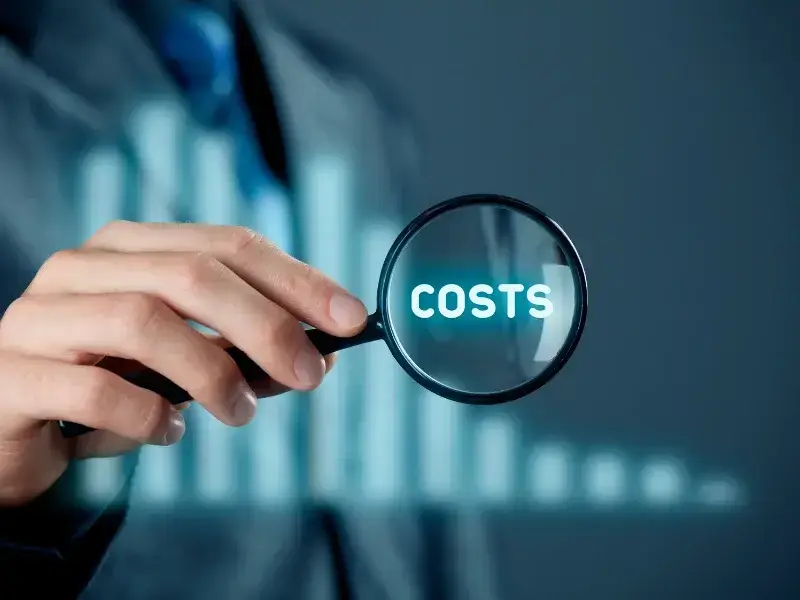
Here are some practical money-saving strategies that won’t sacrifice quality. These approaches have saved my clients millions over the years.
Proven SAP Cost Reduction Strategies
| Strategy | Execution Method | Cost Reduction Potential |
|---|---|---|
| Adopt Standard SAP Processes | Minimize custom code, apply SAP best practice templates. | Saves 15–30% in development/support. |
| Leverage SAP Activate Methodology | Use guided config, fit-to-standard, accelerators. | Reduces implementation time 20–40%. |
| Shift to Cloud Deployment | Choose cloud to eliminate infra CAPEX. | Cuts infra cost by 25–50% over 5 years. |
| Use Global Delivery Models | Combine offshore with onshore for balance. | Saves 20–40% depending on region mix. |
| Consolidate Licenses | Audit roles, remove unused, renegotiate terms. | Saves 10–25% annually on licensing. |
| Streamline Integration Scope | Limit to critical systems during phase 1. | Cuts interface spend by 10–20% upfront. |
| Phase the Rollout | Split by geography or module to stagger cost. | Reduces initial outlay; improves reuse. |
| Automate Testing | Use CBTA, Tricentis, or UAT tools. | Saves 30–50% in testing cycles. |
| Centralize Change Management | Standardize training and communications. | Lowers rework and go-live overhead. |
My Take on SAP Cost Reduction Strategies
Phased Implementation Benefits:
- Reduces initial cash outlay significantly
- Allows you to learn from early phases
- Provides wins and momentum for later phases
- Spreads resource demands over longer period
- Reduces business disruption risk
Phased implementation is your best friend. Instead of boiling the ocean, start with core financials or supply chain, then add modules in later phases.
A retail client saved $1.2M by splitting their rollout into three phases over 18 months instead of doing everything at once. Their initial investment dropped by 40%, and they used lessons from phase 1 to make phases 2 and 3 more efficient.
Standardization vs. Customization:
- Every customization adds cost twice – implementation AND future upgrades
- Standard processes are fully supported by SAP
- Customizations often break during upgrades
- Process changes hurt less than budget overruns
The standardization vs. customization battle is where most budgets explode. One manufacturing client saved over $800K by adapting their processes to SAP standards rather than customizing.
Yes, it was painful for some departments, but the financial difference was massive.
Partner Selection Tips:
- Industry expertise trumps general SAP knowledge
- Check references from similar-sized companies
- Lowest hourly rates rarely mean lowest total cost
- Local resources reduce travel expenses significantly
Partner expertise matters enormously. A chemical company client switched from a general SAP partner to an industry specialist and ended up spending 20% less overall despite higher hourly rates – the specialists worked faster and made fewer mistakes.
Training is often the first budget item cut – and that’s a huge mistake. Instead, use a train-the-trainer approach. Invest heavily in training a core team of internal experts who then train everyone else.
A distribution client trained 15 power users thoroughly who then trained 350 end users, saving approximately $175K in external training costs.
Remember: The cheapest SAP implementation is the one you only have to do once. False savings that lead to rework will always cost more in the end.
Capitalization Guidelines for your SAP Implementation Cost Breakdown
Managing the financial treatment of your SAP implementation can dramatically impact your company’s financial statements. This is something that I explain to CFOs when going through this process of capitalizing these massive projects.
SAP Implementation Cost Capitalization Framework
| Cost Element | Capitalization Treatment | Justification Criteria |
|---|---|---|
| Software License Fees | Capitalize | Considered a long-term asset as per IFRS/GAAP if used beyond one year. |
| Internal Labor (Development) | Capitalize | Directly attributable to system build and configuration for business use. |
| External Implementation Services | Capitalize (if build-related) | Must relate to development/configuration work, not advisory or training. |
| Training and Change Management | Expense | Considered operational/organizational readiness, not part of the asset. |
| Data Migration (Cleansing) | Expense | Preparatory activity; not capitalizable under accounting standards. |
| Data Migration (Loading Scripts) | Capitalize | If automation tools/scripts are reusable and core to system operation. |
| Testing and Quality Assurance | Capitalize (partial) | Only if directly tied to the creation of a working system component. |
| Project Management (Core Build Phase) | Capitalize (partial) | Pro-rata share allocable to build effort can be capitalized. |
| Post-Go-Live Support / Hypercare | Expense | Considered operational, not development activity. |
| Upgrades / Enhancements (Future) | Capitalize (if adds functionality) | Must enhance performance or extend system capability (not maintenance). |
Capitalizable vs. Operational Costs:
- Generally Capitalizable: Software acquisition, hardware, configuration, customization, data conversion, testing, integration
- Generally Expensed: Requirements gathering, training, maintenance, post-implementation support, failed development efforts
The biggest gray area is implementation labor. Most companies can capitalize about 60-80% of these costs, but you need proper documentation.
A manufacturing client saved $2.3M in current-year expenses by properly capitalizing their SAP project – but they meticulously tracked consultant activities to defend their approach.
Tax Implications Worth Knowing:
- Capitalized costs reduce current-year taxable income but increase future years
- Some countries offer tax incentives for technology investments
- Different jurisdictions have different capitalization rules
- Cloud implementations have different treatment than on-premise
When it comes to depreciation, most companies align SAP software with their standard technology depreciation period – typically 3-5 years.
However, some companies use longer periods (7-10 years) for the implementation portion, arguing the benefit period extends beyond the software itself.
Financial Reporting Best Practices:
- Create dedicated project codes to track all implementation expenses
- Require detailed time reporting from consultants specifying capitalizable activities
- Document capitalization decisions and methodologies
- Establish clear phase gates between planning (expense) and execution (capitalize)
- Maintain evidence of testing and acceptance for major deliverables
Remember that your auditors will scrutinize large capitalized projects. One client faced a painful restatement because they couldn’t substantiate their capitalization decisions with adequate documentation. Don’t make that mistake – track everything meticulously from day one.
SAP Implementation Costs vs Other ERP Systems
I’ve implemented SAP, Oracle, and Microsoft Dynamics for different clients over the years. Let me give you the real scoop on how these costs actually compare.
ERP System Cost Comparison
| ERP System | Estimated 5-Year TCO (USD) | Cost Drivers |
|---|---|---|
| SAP S/4HANA (Cloud) | $4M – $12M | Subscription-based licensing, reduced infra, SAP Activate methodology, embedded analytics. |
| SAP S/4HANA (On-Premise) | $5M – $15M+ | Perpetual licensing, on-site infrastructure, high customization, internal IT management. |
| Oracle Fusion Cloud ERP | $3.5M – $10M | Subscription fees, modular pricing, extensive financials and procurement capabilities. |
| Microsoft Dynamics 365 | $2M – $7M | Lower licensing, rapid deployment options, strong Office 365 integration. |
| Infor CloudSuite | $2.5M – $6.5M | Industry-specific suites, cloud-native design, flexible UI and workflows. |
| Workday | $2.5M – $8M | Primarily HR/Finance focus, cloud-only delivery, user-friendly UI, fast updates. |
| NetSuite (Oracle) | $1M – $4M | Targeted at SMBs, lower TCO, rapid implementation, less customization. |
| IFS Cloud | $2.5M – $6M | Strong field service and asset management features, project-centric deployments. |
| Epicor ERP | $1.5M – $5M | SME-focused, manufacturing-centric, deployment flexibility (cloud/on-prem). |
| Odoo | $250K – $2M | Open-source, modular pricing, low cost of entry, suitable for small enterprises. |
SAP vs Oracle: Which ERP Is Right for Your Business?
- Oracle typically runs 10-15% cheaper on initial implementation
- SAP offers more industry-specific functionality out of the box
- Oracle often requires more customization, eroding the initial price advantage
- Both have similar ongoing maintenance costs (roughly 20-22% of license annually)
- SAP’s ecosystem of implementation partners is larger, giving more vendor options
When you compare SAP to Oracle, you’re really choosing between two expensive options. I had a manufacturing client who got quotes of $3.2M for SAP and $2.8M for Oracle. Seemed like Oracle was the deal, right?
But then we calculated the extra customization Oracle needed, and the gap disappeared.
Microsoft Dynamics vs. SAP:
- Implementation projects typically run 30-40% less than equivalent SAP projects
- Implementation timelines average 25-30% shorter
- Better value for mid-sized companies with standard processes
- Less robust for complex manufacturing or global supply chains
- Significantly lower TCO for companies under $1B in revenue
What about Microsoft Dynamics? If you’re looking to save some serious cash, this might be your answer. But there’s always a catch. For complex global operations, you’ll end up building more custom functionality to match what SAP offers out of the box.
The truth is that the initial implementation is just the beginning. When you look at total cost over 5+ years including maintenance, upgrades, and support, that’s where the real differences show up.
SAP is expensive for a reason – but whether that reason matters to your business is the real question.
Related Articles: Save Smarter – Cut Cost, Not Quality
Negotiate SAP Costs Like a Pro
These tactics helped teams trim contracts by six figures. Literally.
Costly SAP Mistakes to Dodge
Lessons learned from SAP projects that went sideways, and how to prevent them.
Plan Your SAP Resources Right
Overstaffed or stretched thin? This fixes the planning gaps.
Build a Steering Committee That Works
A good steering group doesn’t just approve slides, it guides the project.
Real SAP Project Cost Breakdowns: 4 Case Studies

Here are some real cases that show what works and what doesn’t.
Success Stories That Stayed On Budget:
- Manufacturing Company, 500 Employees: This client of mine in Saudi Arabia finished their S/4HANA implementation 5% under budget ($3.8M vs $4M estimated). Their secret was that they assigned their best business process owners full-time to the project, conducted rigorous process mapping before starting, and enforced a strict “no customization without executive approval” policy. Every customization request required proving a clear business case showing ROI.
- Healthcare Provider, 2,300 Employees: Completed on budget at $7.2M by using a phased approach. They started with finance and supply chain basics, then added HR and advanced analytics in later phases. This approach allowed them to spread costs over three fiscal years while learning from early phases to make later ones more efficient.
Horror Stories and Budget Disasters:
- Retail Chain Disaster: Budgeted at $5M, final cost hit $12.3M. What went wrong? Poor requirements gathering led to constant scope changes. Midway through, they discovered their inventory processes weren’t compatible with SAP standard functionality, requiring extensive customization. They also underestimated data migration complexity from their legacy systems.
- Global Manufacturing Nightmare: This project went 143% over budget ($14M vs $5.8M planned) and launched 11 months late. The primary culprits: unrealistic timeline pressure from executives, understaffed internal team, and attempting to implement too many modules simultaneously. They also chose the lowest-cost implementation partner, who lacked industry expertise.
Reddit and Community Insights:
Scrolling through r/SAP reveals consistent themes about real-world costs:
- “We budgeted $3M for our implementation. We’re now at $4.8M and counting.”
- “The software was $850K. Implementation ended up at $2.3M despite the initial $1.2M estimate.”
- “Our consultant rates ranged from $1,200-$2,500 per day depending on expertise.”
- “Training and change management was 8% of our budget but should have been 20%.
Final Thoughts on your SAP Implementation Cost
Build a 25% cushion into your budget. You’ll need it. Every project hits snags.
Stick with standard SAP processes whenever possible. Your departments will push for their way of doing things. Fight this battle. Each customization costs you now and again later.
Don’t pick consultants based just on price. A client of mine went with the cheapest team and paid an extra $2M fixing their work.
An SAP Implementation is a business transformation. Plan for it that way.
What about your SAP journey? Share your cost surprises in the comments. What blindsided you? What advice would you give others? Your real experiences might save someone costs while determining their SAP Implementation Cost Breakdown.
If you have any questions or want to discuss a situation you have in your SAP Implementation, please don't hesitate to reach out!
Questions You Might Have...
1. How much does the SAP program cost?
SAP software licensing typically costs $1,500-$4,000 per user for midsize businesses. Total program costs (including implementation) range from $150,000-$500,000 for small businesses and $500,000-$4 million for mid-sized companies.
2. How much does SAP cost?
SAP costs vary by business size. For small businesses (under 100 employees), expect $150,000-$500,000 total. Mid-sized businesses (100-1,000 employees) typically spend $500,000-$4 million. Enterprise implementations (1,000+ employees) start at $5 million and can exceed $20 million.
3. How much does ERP implementation cost?
ERP implementation costs typically run 1.5-2.5 times the software license cost. For SAP specifically, small businesses spend about $4,000-$6,500 per user, mid-sized businesses spend $7,000-$9,000 per user, and large businesses spend $5,000-$8,000 per user.
4. What is SAP implementation cost?
SAP implementation cost is the total expense of deploying SAP within your organization, including software licensing, hardware, consulting services, data migration, integration work, training, and post-go-live support. Implementation typically costs 1.5-2.5 times the software license fee.
5. How much does SAP S/4HANA cost?
SAP S/4HANA licenses cost approximately 15-25% more than traditional SAP ERP. Implementation costs range from $500,000 for small businesses to $5-20+ million for enterprises. Implementation services for S/4HANA run $1,200-$2,000 per consultant day.
6. Is SAP HANA expensive?
Yes, SAP HANA is expensive compared to traditional databases. However, it eliminates third-party database costs and offers performance advantages. The total cost must be evaluated against business benefits and performance improvements.
7. How much does it cost to migrate to SAP S/4HANA?
Migrating from legacy SAP to S/4HANA typically costs 40-60% of your original implementation cost. For a company that spent $1 million on initial implementation, migration would cost $400,000-$600,000.
8. Is SAP S/4HANA worth it?
For most organizations, yes. S/4HANA offers significant performance improvements, simplified data models, and future-proofing. The ROI timeline is typically 2-4 years, with benefits including faster reporting, reduced maintenance costs, and improved business processes.
9. How long does it take to implement SAP S/4HANA?
Implementation timelines vary by company size: Small companies (4-6 months), Mid-sized companies (9-14 months), and Enterprise businesses (12-24+ months). Complexity, customization requirements, and data volume are the biggest factors affecting timeline.
10. How much does SAP S/4HANA training cost?
SAP S/4HANA training typically constitutes 5-10% of the total implementation budget. For a $1 million implementation, expect to spend $50,000-$100,000 on training. Individual end-user training costs about $1,000-$2,000 per user.
11. What is SAP pricing?
SAP pricing is based on several factors: number of users, modules implemented, deployment model (cloud vs. on-premise), company size, and regional factors. Licenses can be subscription-based (pay monthly/annually) or perpetual (one-time purchase with annual maintenance fees).
12. How long is SAP implementation?
SAP implementation timeframes vary by organization size and complexity: Small businesses (3-8 months), Mid-sized businesses (6-12 months), and Enterprise implementations (12-36 months). Complex global rollouts can take several years.
13. What are the 7 stages of a SAP implementation project?
The 7 stages of SAP implementation are: 1) Project Preparation, 2) Business Blueprint, 3) Realization, 4) Final Preparation, 5) Go-Live & Support, 6) Optimization, and 7) Continuous Improvement. This follows SAP’s ASAP methodology.
14. How much does SAP cost per year?
Annual SAP costs for cloud subscriptions range from $750-$2,500 per user annually. For on-premise deployments, annual maintenance runs 20-22% of the license cost. Total annual costs including support and infrastructure typically range from $1,000-$3,500 per user.
15. Who is eligible for SAP?
Any organization can purchase SAP, but it’s most suitable for businesses with complex operations and revenues above $50 million. SAP Business One is designed for small businesses, while S/4HANA targets mid-sized to large enterprises with more complex requirements.
Tools to Simplify Your SAP Implementation Journey
Must-Read Articles to Strengthen Your SAP Strategy:




